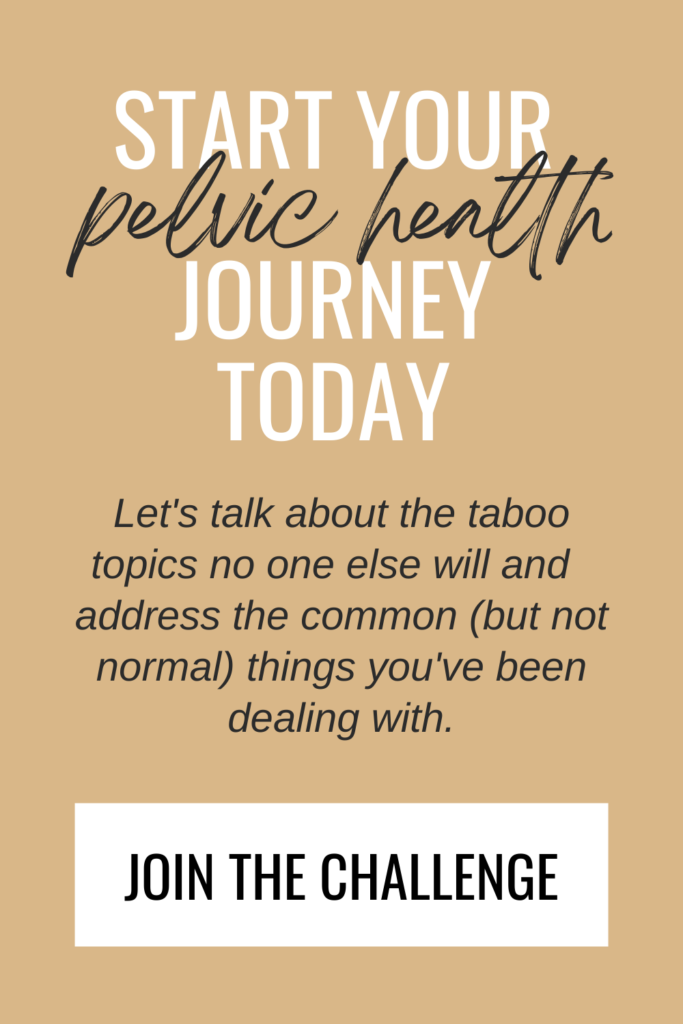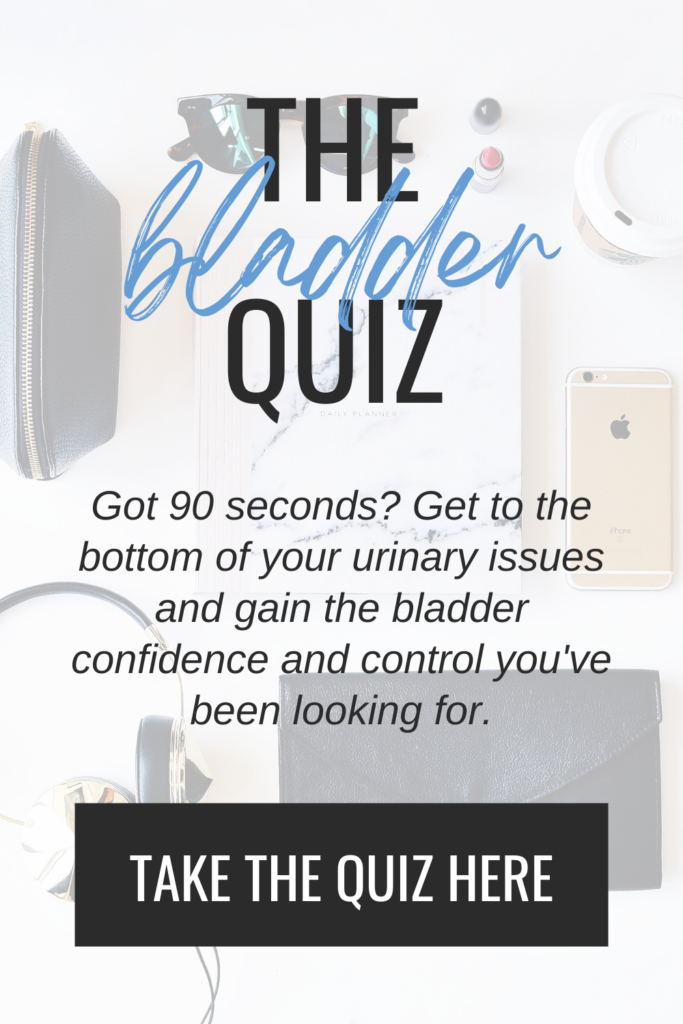Kegels are the popular go-to when the topics of pelvic floor strength or bladder incontinence arise. Celebrities, influences, and authors alike have been known to laugh off “a little bit” of leakage and quickly follow with a vow to become more consistent with daily kegels…and maybe even you or your bestie have done the same.
While your ability to squeeze and contract the pelvic floor is important, kegels really aren’t all they’re cracked up to be in the grand scheme of things (especially when it comes to your bladder).
If you have a hard time doing kegels, can’t remember to do them to save your life, tried them in the past with little to no results, ooooooor even feel like they made your symptoms worse…you can let out a sigh of relief because you’re not alone. In fact, these very points are why kegels sit at the bottom of the to-do list for the patients in my clinic and students in my courses.
I’m giving you permission to slow your roll on doing hundreds of kegels a day, and even drop the guilt if you’re not doing any at all. There are easier and far more effective ways to spend your time and energy, so keep reading to choose your next (and better) bladder-healing strategy—
POSTURE
Posture, specifically pelvic posture, is EV-ERY-THING when it comes to your pelvic floor coordination and control…and therefore your urinary leakage, urgency, and frequency too. Muscles are strongest in their mid range, therefore keeping your pelvis neutral (hips in line with ears, shoulders, and ankles) automatically places your pelvic floor in it’s strongest position.
Checking in with your pelvic posture throughout the day requires minimal time and effort. While it may take an extra bit of mindfulness at first, correcting your posture can and should become a stress-free habit that you effortlessly adopt over time. And as your core and hips become stronger (keep reading for my two cents on that), your ability to maintain good posture will become more natural too.
For even more specifics on finding neutral posture for pelvic health, download your [FREE] guide here. Out of all the tips this blog contains, this is the easiest to implement and will give you the greatest results with the least amount of effort.
BREATHING
When you breathe, your pelvic floor moves. To be more specific, your pelvic floor moves together with your diaphragm with every breath you take. Inhaling causes the diaphragm and pelvic floor to descend; exhaling causes the diaphragm and pelvic floor to ascend. Breath after breath, the diaphragm and pelvic floor move up and down like a wave.
As I mentioned above, muscles are strongest in their mid range, and similar to a neutral pelvis, diaphragmatic breathing causes the pelvic floor to move through its mid range and remain functional and strong. Pretty cool…huh?? Here’s a few things you can do with this information…
1. Don’t hold your breath. Many people hold their breath as they exercise, lift, or bend over and this creates a downward pressure on the pelvic floor resulting in leakage or even bladder prolapse.
2. Breathe out on the hard part. Because the pelvic floor lifts when you exhale, this is essentially like doing a kegel to support your bladder and pelvic floor. Exhaling as you squat, lift, bend, push, or pull decreases the likelihood of leakage and downward pressure on your bladder.
3. Breathe with your belly. Stress, compressive clothing, and even “sucking it in” limit the abdomen (and therefore the diaphragm and pelvic floor) from moving like they’re supposed to. Make sure your stomach expands with every inhale, and you can be confident that your diaphragm and pelvic floor are following suit.
For more specifics on using your breath for pelvic floor control, download my [FREE] guide here. Pelvic floor strength really can be as simple as breathing, but you need to do it correctly to see results.
PELVIC FLOOR RELAXING
Despite what you may think, learning to relax your pelvic floor can actually improve your muscle strength and bladder control. If the pelvic floor is tight, it can’t properly contract and urinary issues are more likely to occur.
If you’ve tried kegels with no improvement or feel they made your bladder issues worse, this is where you’ll want to start.
The breath and posture techniques listed above play a role in pelvic floor relaxing. You can also achieve it through stretching and mindfulness techniques, all of which can be found in this [FREE] guide. I also have a blog post on the exercises I do daily to relax my pelvic floor, which you can find here.
CORE + HIP STRENGTHENING
While kegels remain a mythical creature, most of us have done core exercises and booty workouts at least once in our lives. Praise be…core and hip strength positively influence the pelvic floor because everything is connected, making hitting the gym or yoga mat a feasible alternative to kegels.
By working on isolated core strength or hip exercises just a few times a week, you’ll likely see improvement in your urinary leakage, urgency, and frequency too.
You can find my favorite core exercises here (perfect for all activity levels, even those with a diastasis) and my go-to hip strengthening movements here (a great workout to turn to if you only have 15 minutes to spare). These regimens aren’t crazy or complicated, they just work the right muscles in the right ways so that you get the results you’re looking for.
Now let me be clear— kegels aren’t bad. In fact, when done correctly…in the right amount…aaaaaaand at the proper times…kegels can provide improvement in your bladder health…but all those stars need to be aligned. If you’re looking for this specific kind of guidance, my online course, The Bladder Blueprint, puts all of those pieces together and shows you exactly where kegels fit in the pelvic health puzzle.
Thankfully, you don’t [have] to do kegels to see improvement in your pelvic floor strength or bladder control, but you do need to set your body up for success with a bit of patience and a whole lot of mindfulness, and the rest will come as you’re persistent and practice.
For the best results, choose one action item from the list above, then repeat it and perfect it until it’s a part of your everyday. If you see progress…great! You’ve found your answer. If you still need more, move down the list and add another strategy to your regimen.
To my kegel-hating companions…there is more and the answers are above. #praise
– Amanda
Disclaimer: The content provided here does not constitute medical advice, nor is it a substitute for personalized healthcare. If you have concerns about a medical condition, diagnosis, or treatment, you should consult with a licensed healthcare professional.



















